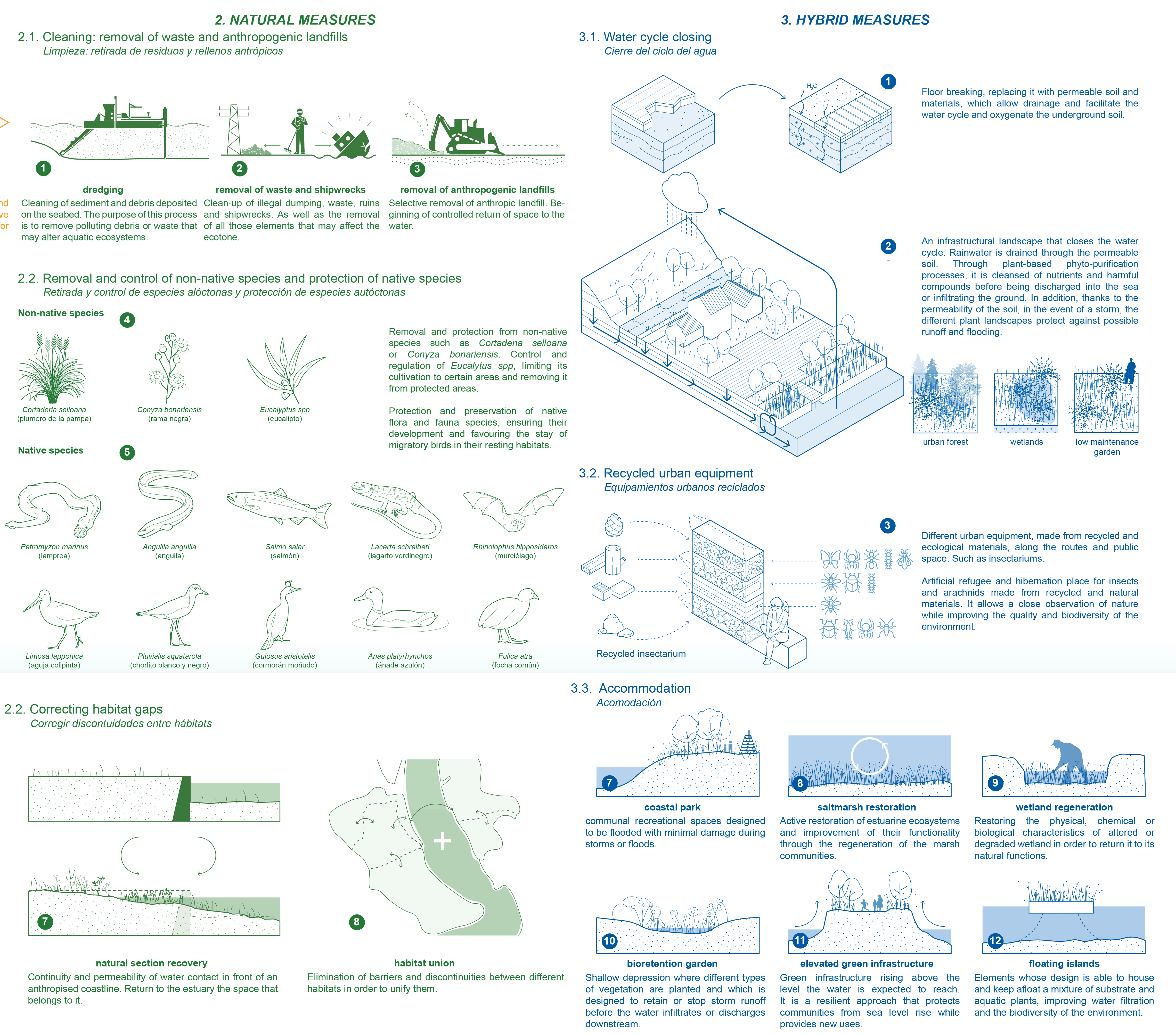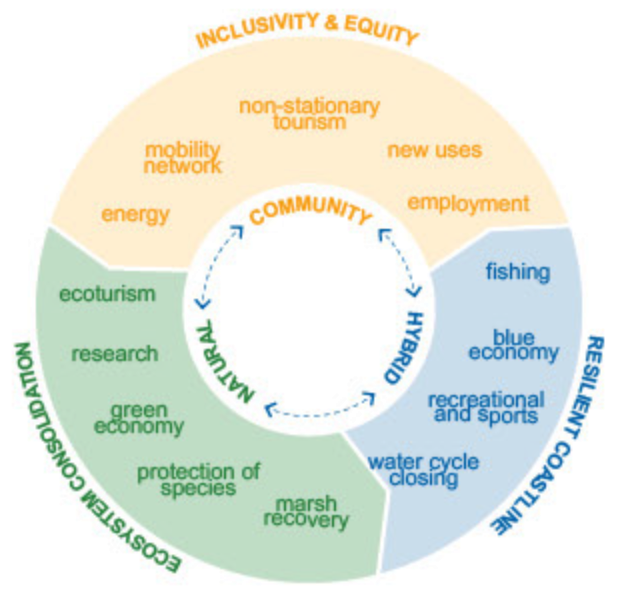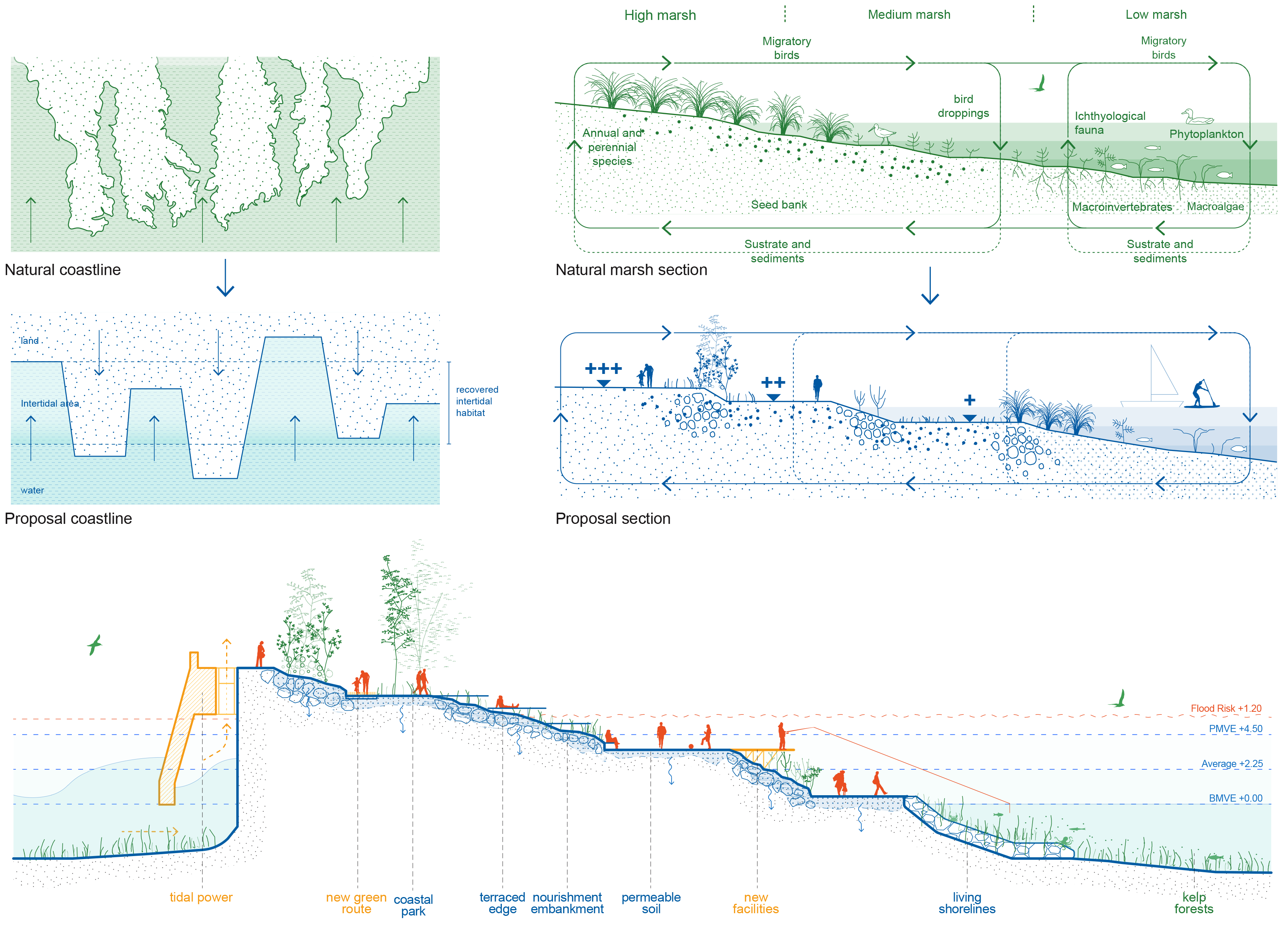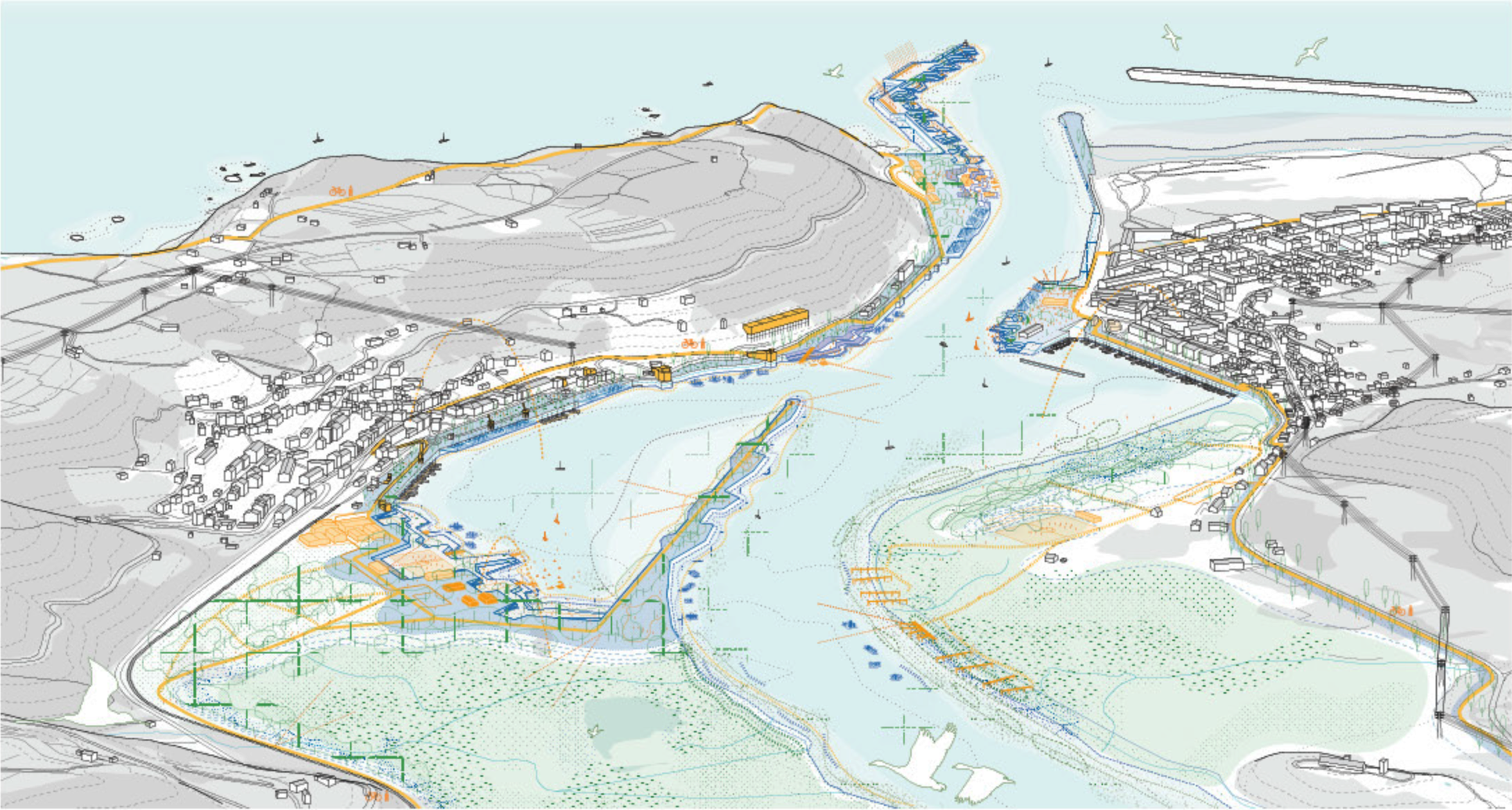Europan Notebook #2
STRONG IDEA
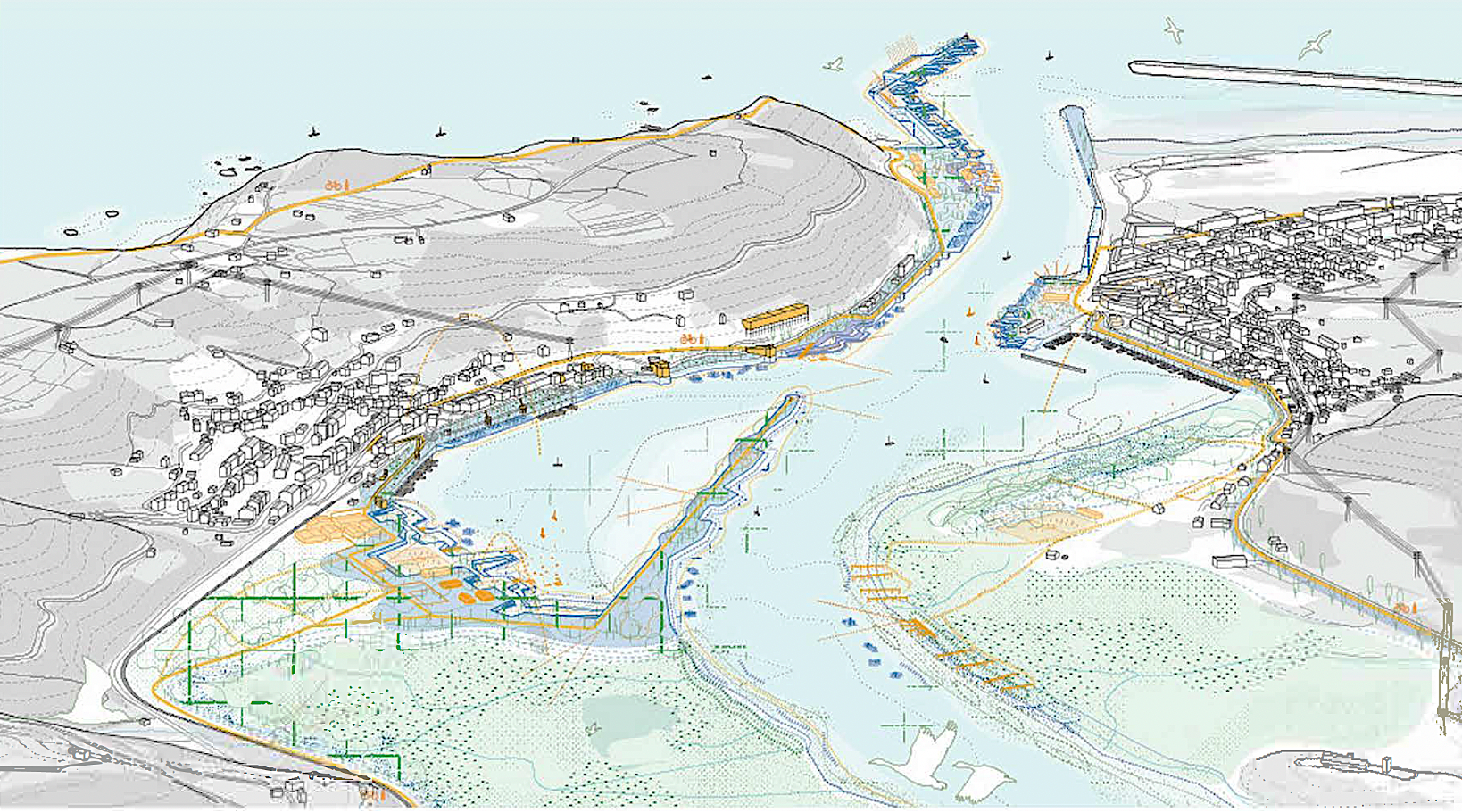
HOW TO CONSOLIDATE AN ESTUARY BETWEEN WILD AND CULTURAL NATURE?
Nalón (ES) Tide Builds - Europan 17 winner
The city of Nalón (ES) wishes to adapt the old port located at the mouth of the river, designed around the transportation of coal, a now obsolete activity, to create new activities while taking into account climate change. The winning team of the competition proposes in its project "Tide Builds" - without erasing the past - to reconstruct a natural environment, both wild and cultivated, that connects the past to the ecological future of the river mouth. The text below reproduces part of the presentation but emphasizes natural and hybrid actions to consolidate the estuary and allow the community to regenerate its uses.
Winning team: Justo Diaz and Guillermo Pozzo architects (ES).
Actors: Town of Nalón and the Regional Ministry of Rural Affairs and Territorial Cohesion of the Principality of Asturias.
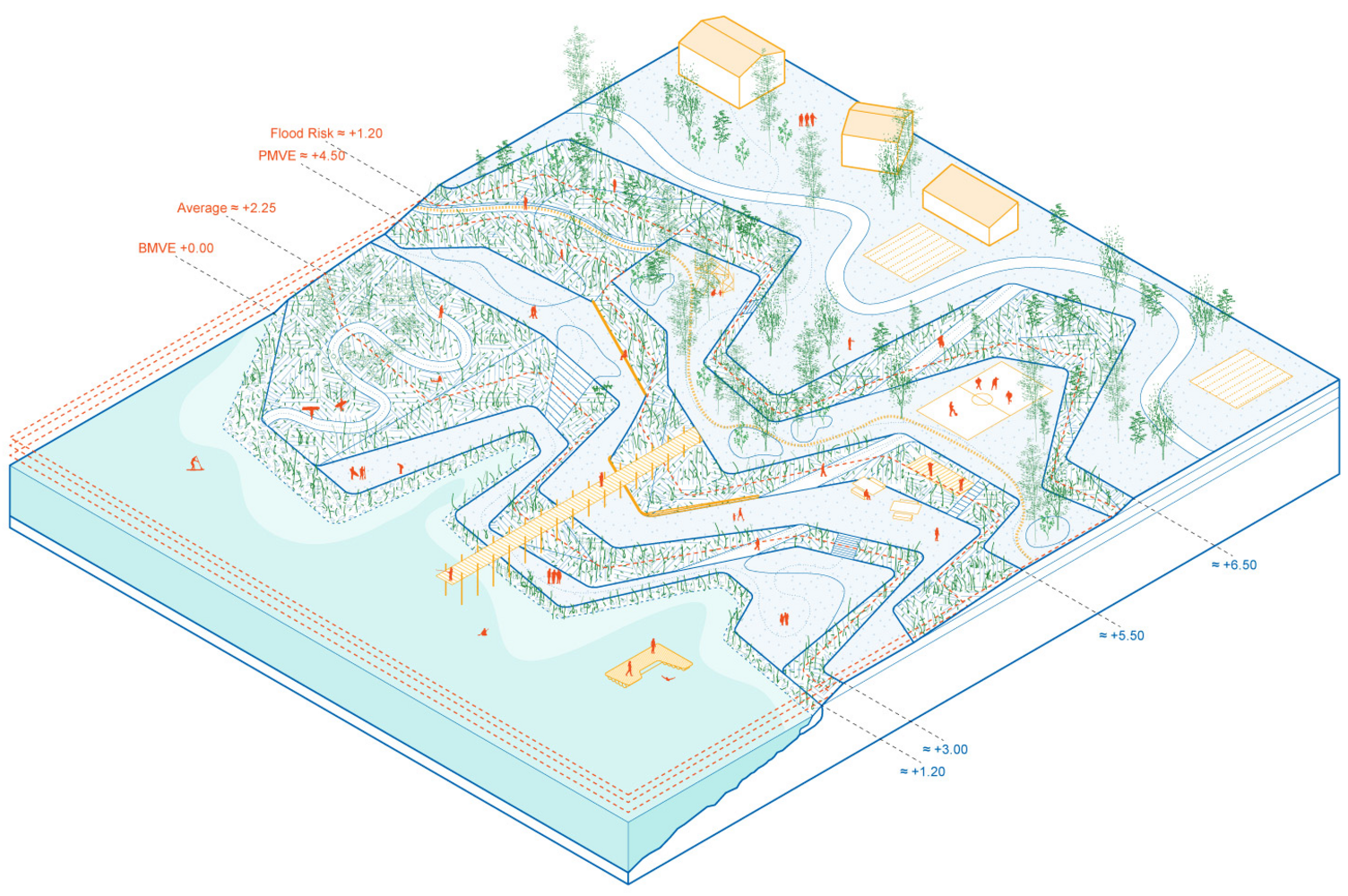
SYSTEM OF ACTIONS
This involves allowing the system to mutate and adapt while maintaining its essential functions in response to any adversity that may arise. Second, it aims to prevent and mitigate risks that may arise from adversities beyond the system's current capacity to recover on its own.
To achieve this objective, it is essential to design and plan processes with a long-term vision and global scope.
The proposal is presented as a constantly evolving project that will be developed over the next thirty years. It creates uses at different scales, adapting to tidal variations. It treats water as a friend that must be given sufficient space for the development of its natural cycles and services.
With a respectful approach to natural processes and an eye toward the future, the proposal seeks to ensure coexistence between humans and nature. It lays the foundation for a future where biodiversity thrives and the environment is protected for generations to come.

INTERTIDAL SPACE
In contrast to the land-sea duality, the project proposes an intertidal territory (between high and low tides), a space of exchange with the sea that supports human activity and biodiversity while serving as a refuge from waves and flooding. To establish new relationships between users and habitats with water, the design of the intertidal territory is based on emulating natural coastal forms. These become essential tools for rebuilding a resilient coastline, capable of facing the challenges of climate change and coastal erosion. The key is that these forms operate at all scales, increasing diversity and facilitating topographic and salinity gradients. The result is a landscape with a fractal dimension, similar to natural coasts, which allows for adaptive responses in its components.
In this sense, the diversity generated by the intertidal zone becomes a crucial factor for the development of marine and terrestrial biodiversity. By providing diverse natural habitats, this environment encourages the coexistence of different species, and organisms capable of evolving to adapt to changing environmental conditions outweigh entropy.


From an extractivist past to a future that brings past and future together!
From the Middle Ages, with the transport of salt through the port of San Esteban, to the rise of Asturian mining and the transport of coal to the high mountains during the first half of the 20th century, the landscape that makes up the Nalón estuary has been conditioned and modified. A human-affected territory, shaped by an extractivist economic model.
Rather than erasing the past or recreating a long-lost natural environment, the project proposes a growth that emerges from the conditions of the past and present toward a new and unique future, creating an integrative and synthetic nature, simultaneously wild and cultivated, renewed and constructed.
A system of actions links community actions with natural actions to ensure ecosystem health focused on the recovery, protection and consolidation of different natural habitats, and hybrid actions dedicated to the creation of natural supports for maritime activities and the protection of the coastline, ensuring the coexistence of the natural environment and uses.

NATURE ACTIONS...
- cleaning of various ecosystems, waste disposal, seabed dredging, removal of anthropogenic landfill and invasive elements in protected areas.
- controlling flora and fauna - eliminating and controlling non-native species and protecting/promoting native species.
- rebuilding and maintaining the ecosystem and correcting the discontinuities that currently exist between different natural habitats.
... AND HYBRID MEASURES
- enabling the water cycle by incorporating permeable and draining soils, while introducing plant elements that aid in retention, slowing, and purification. - taking nature-based protective measures to protect against the effects of land-sea contact (e.g., berms, living breakwaters, or tidal pools), avoiding the risk of coastal erosion
- adapting the land-sea environment to the continuous contact between different ecosystems: literary parks, marsh restoration, wetland regeneration, bioretention gardens, raised green infrastructure, or floating islands).
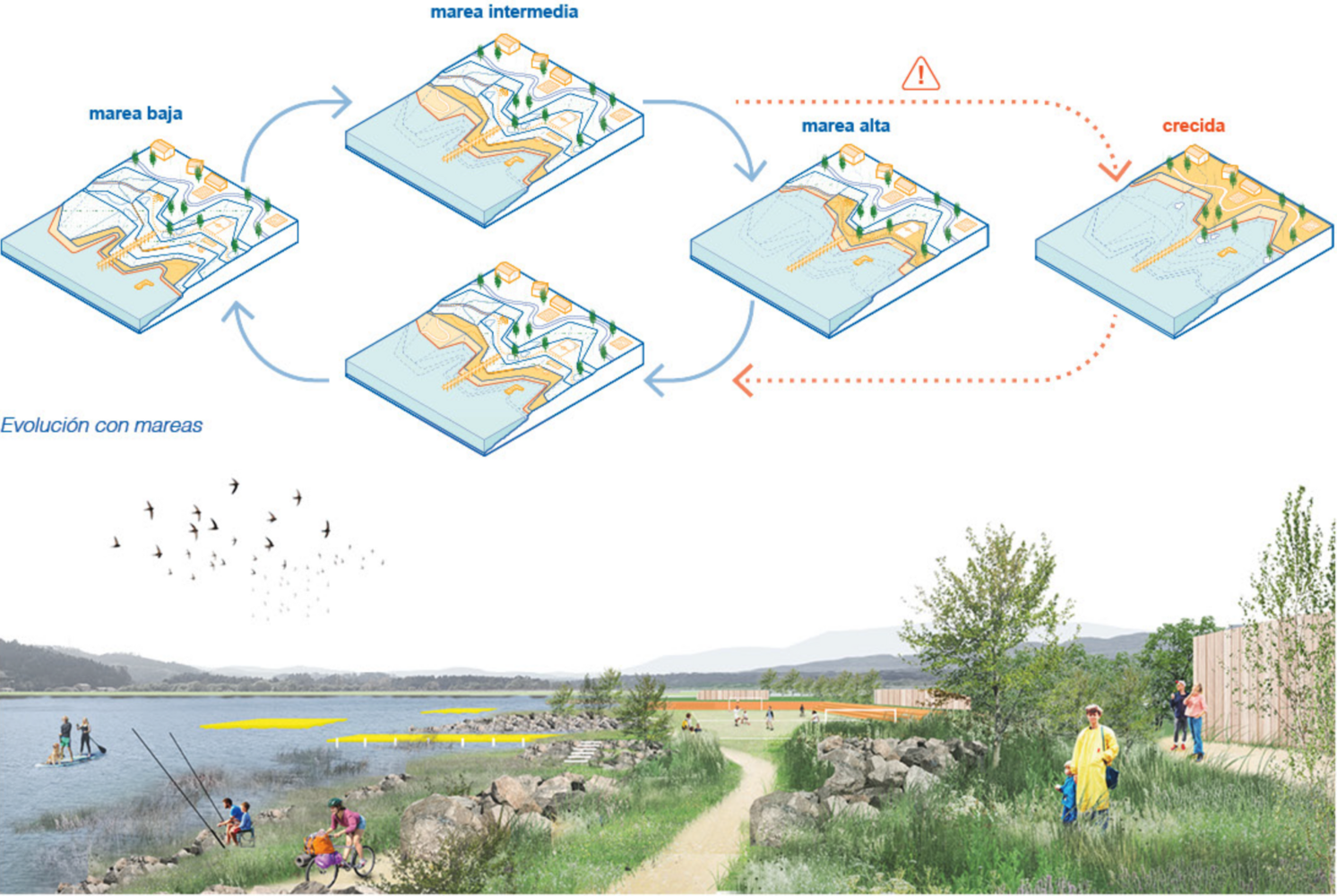
ESTUARY CONSOLIDATION: COMMUNITY EFFECTS
The consolidation of the various measures implemented during the development of this proposal is shaping a new coastal landscape capable of adapting and evolving in response to future environmental changes, including the challenges posed by climate change.
Coastal consolidation establishes a series of interdependent relationships between the community and the physical environment. Land use changes facilitate the interaction and implementation of new ecosystem-related uses. The increased length of the coastline, along with environmental restoration, increases opportunities for recreational and commercial fishing. Improved access to the water surface allows for the development of recreational and sporting uses (paddleboarding, canoeing, etc.). The restoration and recovery of ecosystems as a transit point for migratory birds attracts sustainable environmental activities and ecotourism. The development of the urban area of San Juan de La Arena as a gastronomic hub and event venue, the improvement of the network of safe paths for pedestrians and cyclists and the increase in the frequency of public transport are bringing the region closer to a more mobile tourism sector.
